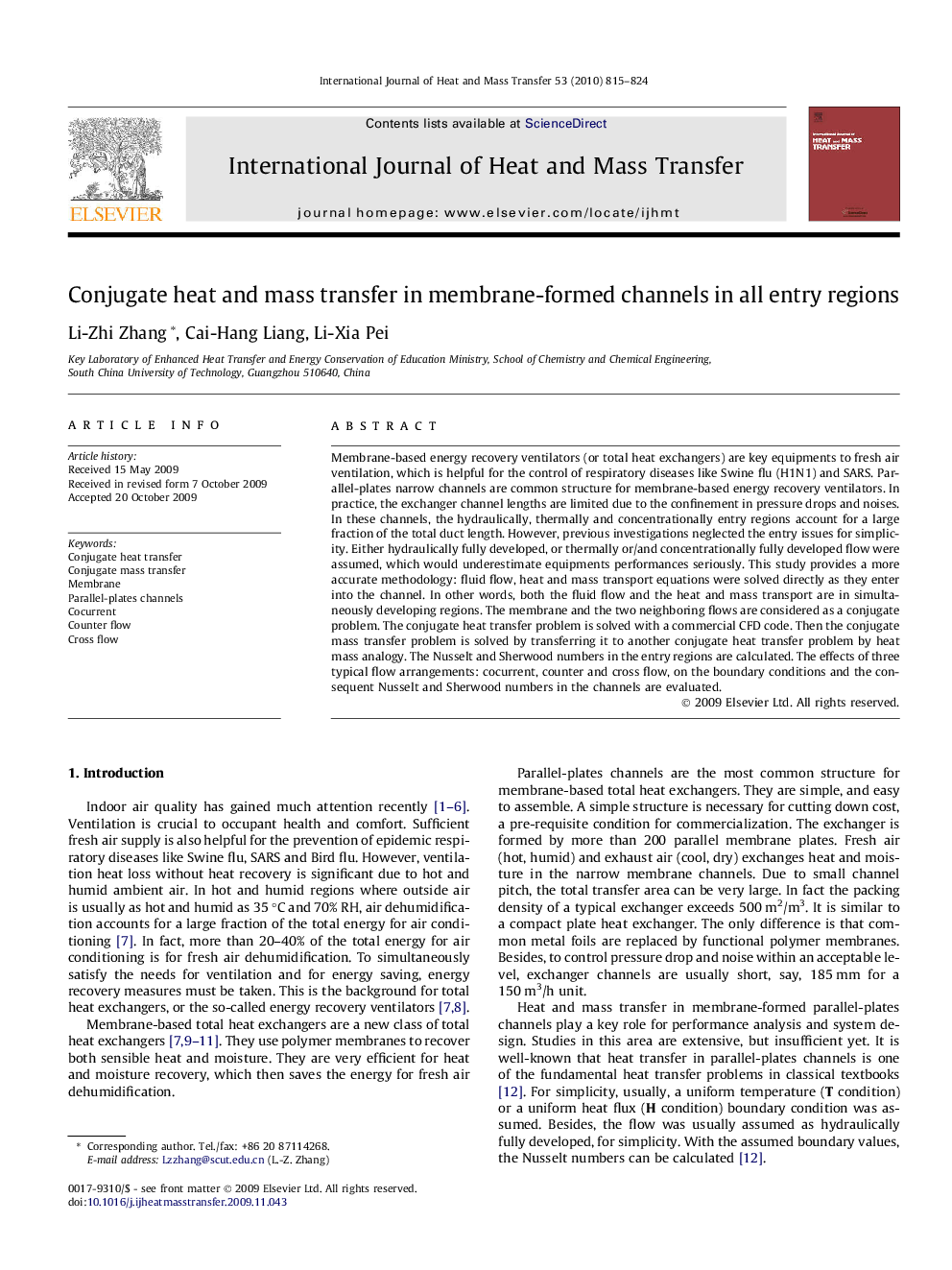| Article ID | Journal | Published Year | Pages | File Type |
|---|---|---|---|---|
| 658836 | International Journal of Heat and Mass Transfer | 2010 | 10 Pages |
Membrane-based energy recovery ventilators (or total heat exchangers) are key equipments to fresh air ventilation, which is helpful for the control of respiratory diseases like Swine flu (H1N1) and SARS. Parallel-plates narrow channels are common structure for membrane-based energy recovery ventilators. In practice, the exchanger channel lengths are limited due to the confinement in pressure drops and noises. In these channels, the hydraulically, thermally and concentrationally entry regions account for a large fraction of the total duct length. However, previous investigations neglected the entry issues for simplicity. Either hydraulically fully developed, or thermally or/and concentrationally fully developed flow were assumed, which would underestimate equipments performances seriously. This study provides a more accurate methodology: fluid flow, heat and mass transport equations were solved directly as they enter into the channel. In other words, both the fluid flow and the heat and mass transport are in simultaneously developing regions. The membrane and the two neighboring flows are considered as a conjugate problem. The conjugate heat transfer problem is solved with a commercial CFD code. Then the conjugate mass transfer problem is solved by transferring it to another conjugate heat transfer problem by heat mass analogy. The Nusselt and Sherwood numbers in the entry regions are calculated. The effects of three typical flow arrangements: cocurrent, counter and cross flow, on the boundary conditions and the consequent Nusselt and Sherwood numbers in the channels are evaluated.
